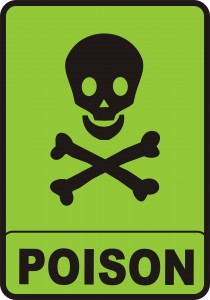Creosote Is Dirty And Dangerous
Most of the time, when chimney professionals like Jack Pixley Sweeps bring up the subject of creosote, we’re talking about fire safety. And there’s a good reason for that: Excessive creosote buildup — particularly if those creosote deposits develop into second or third stage creosote — can lead to a serious fire hazard.
But that’s not the only reason creosote buildup is dangerous, and why regular chimney sweeping is an important part of safer chimney use. Creosote itself — and the various chemicals that make it up — has been shown to be toxic.
Creosote Development
Several different materials get dubbed creosote, including the dark liquid used to treat commercial lumber materials like railroad ties. The creosote we’re talking about is a chemical deposit that results from burning wood in a heating appliance. Gases rise in the chimney connected to that appliance as the wood burns, and the cooler flue causes condensation, resulting in creosote build-up.
The coal tar creosote used in wood treatment and the creosote in your flue do have something important in common, other than their descriptor: People should avoid prolonged direct exposure to either, because both can be dangerous.
Short-term and prolonged exposure to the chemicals in creosote has been shown to result in an array of health issues, from skin and respiratory irritation to stomach pains and a potential worsening of asthma symptoms, according the Agency for Toxic Substances and Disease Registry.
Limiting Creosote Exposure
Exposure to chimney creosote can happen in different ways. Airborne particles can be breathed in. Chemicals can be absorbed through the skin or — a particular concern with kids — orally, if fingers that came into contact with creosote were absent-mindedly put in your mouth.
Limiting exposure to creosote starts with limiting the development of creosote to begin with, by burning the right materials. Burning green or wetter wood leads to a cooler fire and more creosote — and burning anything else, like trash, can contribute to creosote build-up and give off toxic chemicals, depending on the material.
Sticking to burning kiln-dried or seasoned cordwood only is your best bet. It provides the best, cleanest burn, and is smarter to use both short and long term.
The other key step is having a professional chimney technician clean your flue regularly. During a chimney sweeping appointment, Jack Pixley Sweeps technicians will remove creosote deposits from your flue, using specially designed tools and vacuums to make sure the mess is completely confined and removed. Our technicians are trained to safely handle and safely dispose of creosote, so you don’t have to come into contact with it.
If you want to know more about creosote — and limiting and removing it from your chimney system — give Jack Pixley Sweeps a call. We’re always happy to help our clients!

